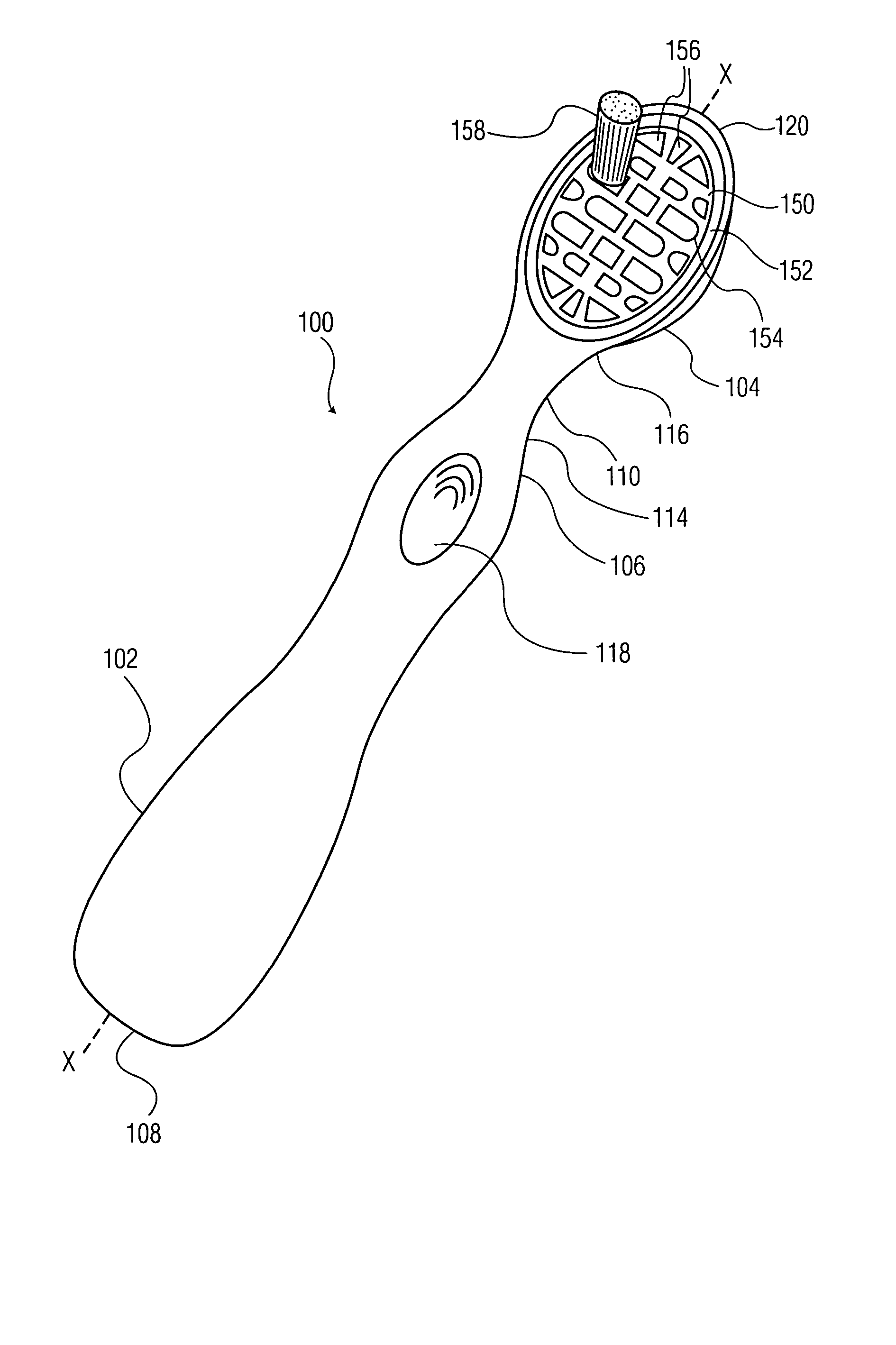Flexible toothbrush head
a flexible, toothbrush head technology, applied in the field of toothbrushes, can solve the problems of a toothbrush with a very rigid head that cannot be easily conformed to the physical characteristics of a user, and achieve the effect of improving the physical characteristics of the user
- Summary
- Abstract
- Description
- Claims
- Application Information
AI Technical Summary
Benefits of technology
Problems solved by technology
Method used
Image
Examples
Embodiment Construction
[0017] Referring to FIGS. 1 and 2, an exemplary toothbrush including a head plate according to the invention is illustrated and generally indicated at 100.
[0018] Toothbrush 100 includes a handle 102 at a proximal end thereof, and a brush section 104 that is defined by a neck 110 that terminates in a head 120 at a distal end of toothbrush 100. Handle 102 has a free proximal end 108 and an opposite neck end 106. Neck 110 generally includes a first end 114 and a second end 116 with first end 114 being located at neck end 106 of handle 102 and the second end 116 being located at head 120. In other words, neck 110 is the portion of toothbrush 100 that extends between handle 102 and head 120. Head 120 is preferably generally aligned with the longitudinal axis x-x of toothbrush 100.
[0019] Neck 110 and handle 102 may be constructed as a unitary member by forming neck 110 integral to handle 102 at neck end 106 of handle 102, or may be formed detachable from handle 102 at the neck end 106. ...
PUM
 Login to View More
Login to View More Abstract
Description
Claims
Application Information
 Login to View More
Login to View More - R&D
- Intellectual Property
- Life Sciences
- Materials
- Tech Scout
- Unparalleled Data Quality
- Higher Quality Content
- 60% Fewer Hallucinations
Browse by: Latest US Patents, China's latest patents, Technical Efficacy Thesaurus, Application Domain, Technology Topic, Popular Technical Reports.
© 2025 PatSnap. All rights reserved.Legal|Privacy policy|Modern Slavery Act Transparency Statement|Sitemap|About US| Contact US: help@patsnap.com



